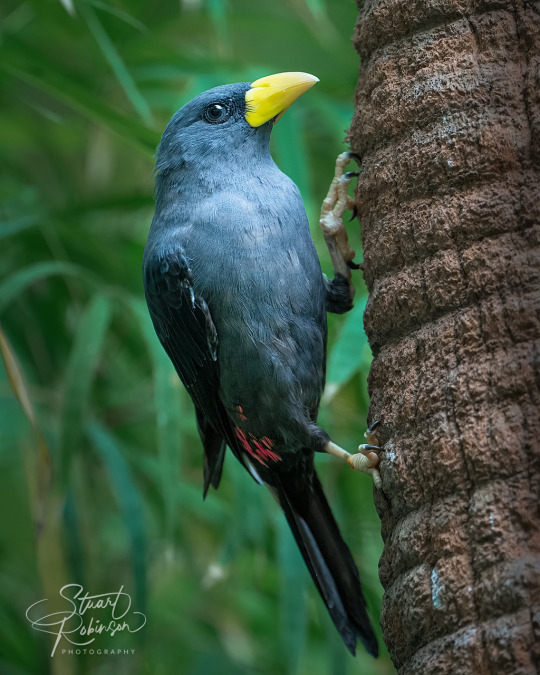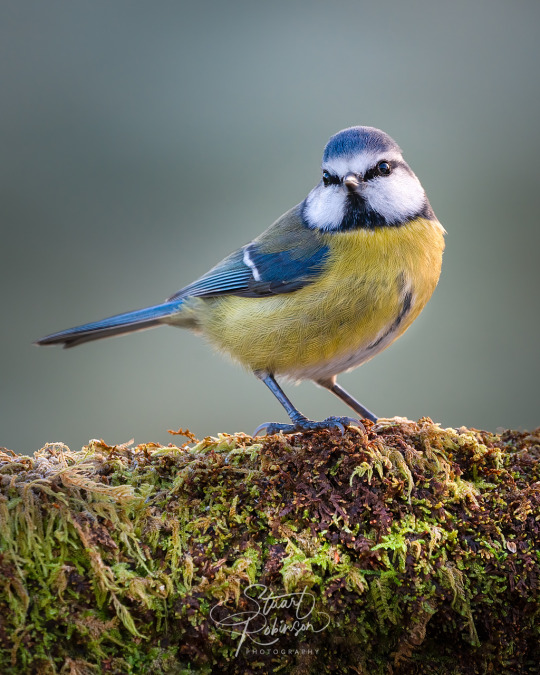Photo

Red-winged starlings can be found in East Africa and can now be found in many urban areas, sitting around buildings and on fence posts. This is a female as the plumage around the head is grey in colour, whereas the males are glossy black. Their flight feathers aren't actually red, but a russet-orange colour, so the name is a bit misleading.
#animals#beautiful birds#beautiful bird#bird_captures#birdlife#bird photo#my bird photography#my photograph#nature#nature photography#photographer#photographers on tumblr#wildlife photographers#wildlife#sony alpha#sonyalpha
4 notes
·
View notes
Photo

Forming noisy flocks consisting of hundreds of birds, grosbeak starlings can be found in their native home of Sulawesi, Indonesia. They nest in the holes of rotten tree-trunks, often in large colonies as there's greater safety in numbers. They get their name Scissirostrum dubium from the shape and disproportionately large size of their bill.
#beautiful bird#beautiful birds#beautiful nature#wildlife#wildlife photographers#photographers on tumblr#nature photography#my photography#birds#bird photography#birdlife#bird
2 notes
·
View notes
Photo

The beautiful, and beautifully-named Asian fairy-bluebird. This is the male, with his spectacular iridescent blue plumage, females are a plain olive-green. Fairy-bluebirds have a large range and are adaptable birds, so currently their numbers aren't particularly threatened in the wild.
#beautiful bird#beautiful birds#beautiful nature#bird#bird captures#birdlife#bird photo#bird photography#fairy bluebird#bluebird#my bird photography#my photography#nature#nature photography#original photograph#photographer#photographers on tumblr#photography#wildlife photography
9 notes
·
View notes
Photo

Continuing the study theme, this striking male Cabot's tragopan. Considered vulnerable in its native south-east China at less than 10,000 individuals, it is under threat from yet more habitat loss and illegal hunting. The male has a really impressive mating display - raising feathers on its head that look like horns, and unfurling inflatable wattles beneath its bill to impress a potental mate.
#animals#beautiful birds#beautiful bird#bird_captures#birdlife#birdphoto#bird photography#birds#my bird photography#my photograph#nature#nature beauty#original photography#photographer#photographers on tumblr#photography#wildlife photography#sony alpha#wildlife
8 notes
·
View notes
Photo

Almost other-worldly, the red-billed curassow is native to Brazil, but is now endangered due to habitat loss from agricultural land and plantations, and they're even taken from reserves for the illegal bird trade. They're a large bird and predominantly ground-dwelling, which makes them an even easier target.
#animals#beautiful birds#beautiful bird#beautiful nature#bird#bird_captures#birdlife#bird photo#bird photography#birds#cute animals#my bird photography#my pictures#my pics#my photograph#nature#nature beauty#nature photograph#original photograph#photographer#photographers on tumblr
145 notes
·
View notes
Photo




A small flock of crossbills recently arrived in my local area. These fantastic birds are highly adapted to eating the seeds of pine cones, and often hang upside down before cutting the cone from the tree and flying to a nearby branch. The males have bright red plumage, while the females are a delicate yellowish-green. Usually confined to coniferous woodlands, sometimes the birds ‘irrupt’, and travel far and wide looking for food in areas they wouldn't usually be found.
#animals#beautiful bird#beautiful nature#birds_captures#bird photography#bird photo#birdlife#bird watching#birds#my bird photography#my pics#my photograph#nature#nature photography#photographer#photographers on tumblr#wild birds#wildlife photographers#wildlife photography#wildlife#birding#crossbill#common crossbill
11 notes
·
View notes
Photo

Blue tits weigh just 11 grams and expend huge amounts of energy searching for food, so even the slightest warmth from the sun's rays is a huge bonus at this time of year. You might have noticed that instead of a pure blue, they're actually a subtle cyan colour, reflected by the birds' Latin name of Cyanistes caeruleus.
#animals#beautiful bird#beautiful birds#beautiful nature#bird#birds_captures#bird photography#bird photo#birdlife#bird watching#birdwatching#birds#my bird photography#my pics#my photograph#my photography#nature#nature photography#photographer#photographers on tumblr#wild birds#wildlife photographers#wildlife photography#wildlife#birding#blue tit
5 notes
·
View notes
Video
youtube
A guide to using custom presets on your camera, and how they can make it quick and easy to switch between settings suited for different types of photography such as landscape and nature. Getting out into nature is really beneficial, especially at the moment, and there's no better excuse than taking your camera. Who knows what you might see!
#tutorial#photography tips#photographytricks#photography tutorials#howto#wildlife photography#landscape photography#snow#sony alpha#canon eos#photography#nature photography#red fox
3 notes
·
View notes